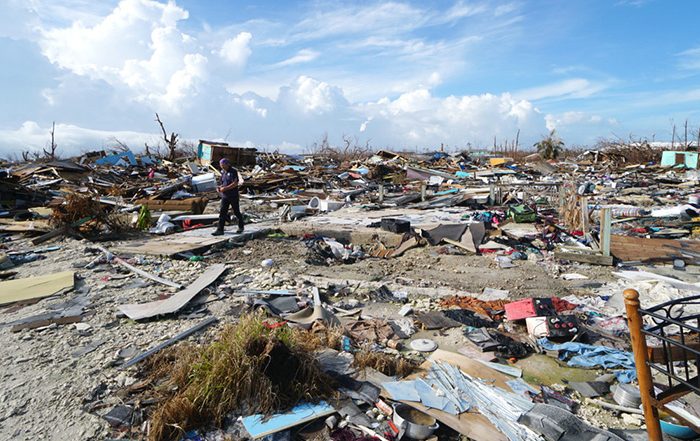
Disasters explained: hurricanes, cyclones, typhoons
Find out everything you need to know about hurricanes, cyclones and typhoons.
We carefully study the weather
When we’re monitoring a tropical storm, we use a variety of sources to give us a detailed overview of the situation.
Depending on where a storm is predicted to make landfall, we will often monitor local news sources and government and disaster management agency websites. This helps us understand how governments and local agencies are preparing for and responding to the storm.
We continue to monitor after the storm has made landfall to understand the impact on affected communities, and to see if there will be an emergency shelter need.
We place our aid in strategic locations
Before a disaster happens, we make sure we are ready to help.
Thanks to your donations, we store aid in strategic locations around the world so we can get it to the families who need it as quickly as possible.
As soon as it’s possible to enter the country, we’re there.
We handpick from our team of expert volunteers
Over the past 19 years, we’ve built up a team of incredible volunteers who are ready to help at a moment’s notice.
Between them, they speak multiple languages and have responded to more than 200 disasters.
Every ShelterBox volunteer always has a bag packed and is ready to go within less than three days.
We make contact
As soon as we see disaster looming, we make contact with our partners on the ground.
We establish the scale of potential destruction, the number of people likely to be affected and exactly what help they need from us – and you.
Our partners enable us to find out more information so that we can go further and reach more people that desperately need support.
We go that extra mile
After a disaster, we use every means possible to reach families in hard to reach areas.
Our teams travel by foot, boat, helicopter or even tuk-tuk to get there. Whatever it takes to reach communities who are often overlooked by others.
We are committed to seeing a world where no family goes without shelter after disaster and we help as many families as we can.
But we are a charity with limited resources and knowing who, where and when we can help can be hard.
We use our response criteria to make the decision around whether or not we are in a position to respond.
These questions help us make those tough decisions. Most importantly, they help us prioritise vulnerable families around the world who wouldn’t otherwise receive the vital support they need.
When we’re monitoring a tropical storm, we use a variety of sources to give us a detailed overview of the situation.
This lets us see current weather updates and weather patterns for the next 7/8 days. We can normally identify ahead of time when it looks like a tropical storm or hurricane will start to form, and we can then monitor the storm accordingly.
The Global Disaster Alert and Coordination System is a resource that provides updates on a range of disaster events which rates the overall humanitarian impact of a disaster. It also provides updates on the impact of the disaster, as well as resources such as maps of the affected areas.
This is an interactive map that tracks active tropical storms and earthquakes.
This is a website operated by the National Oceanic and Atmospheric Administration (NOAA) that issues updates and key messaging on tropical storms and hurricanes. They also produce detailed maps and issue advisories for areas where a tropical storm or hurricane is expected to make landfall.
NOAA is a US government agency that issues a forecast for the hurricane season.
Depending on where a storm is predicted to make landfall, we will often monitor local news sources and government and disaster management agency websites, to understand how governments and local agencies are preparing for and responding to the storm.
We continue to monitor the situation after the storm has made landfall to understand the impact on affected communities, and to see if there will be an emergency shelter need.
We use our response criteria to make the decision around whether or not we are in a position to respond.